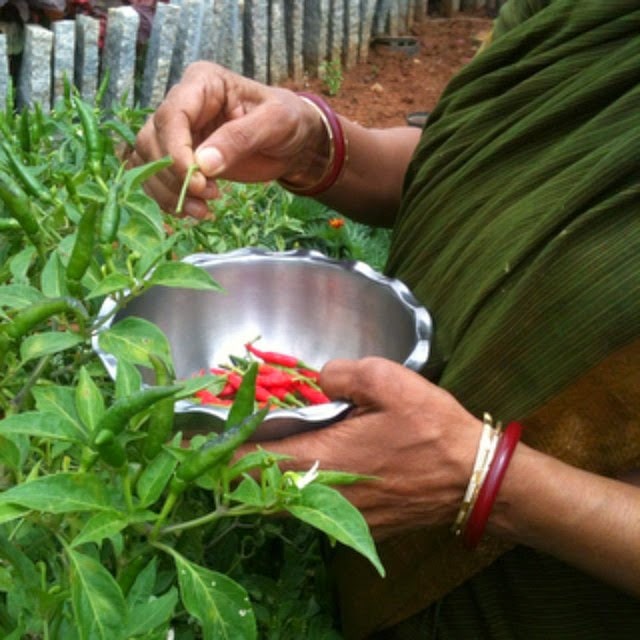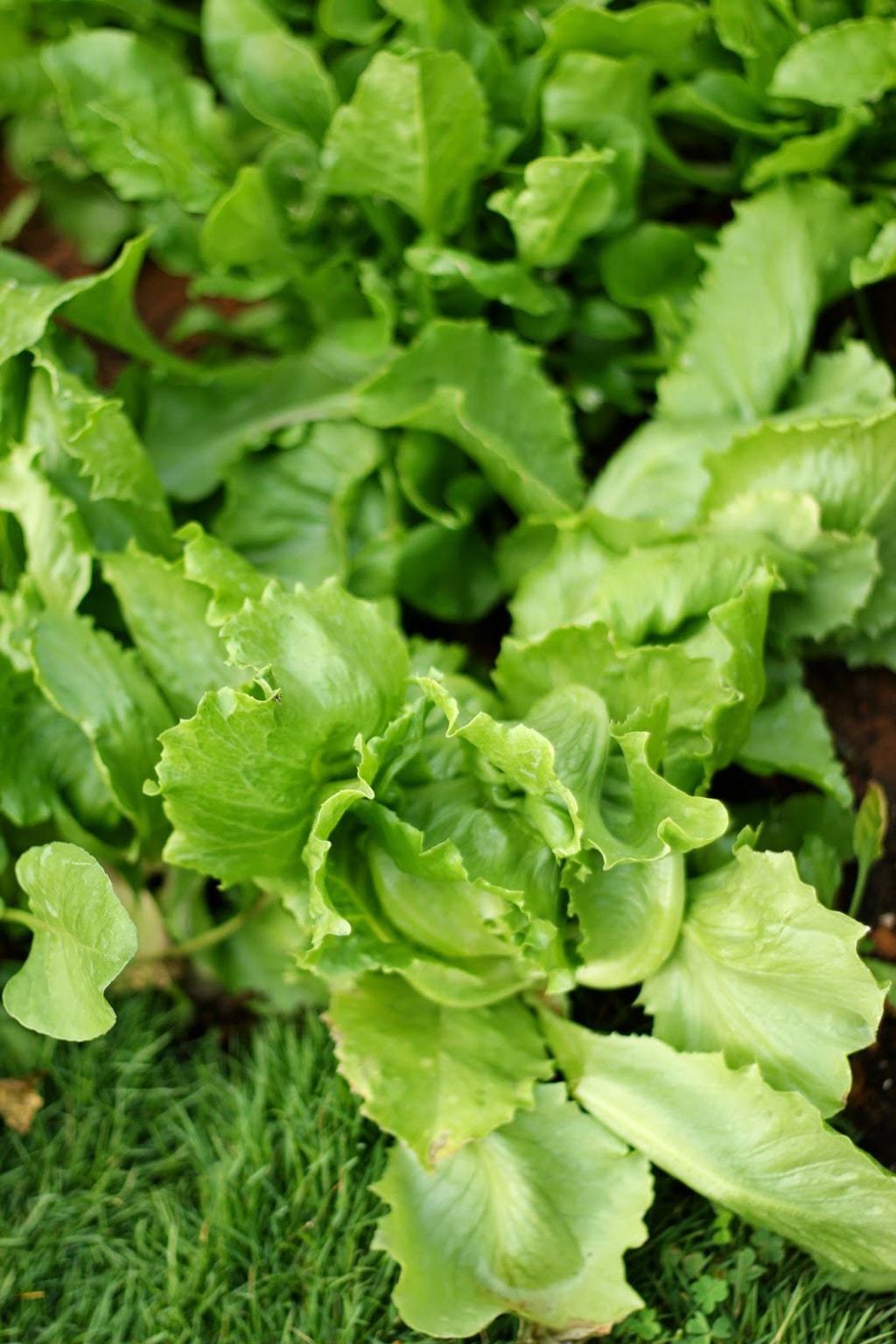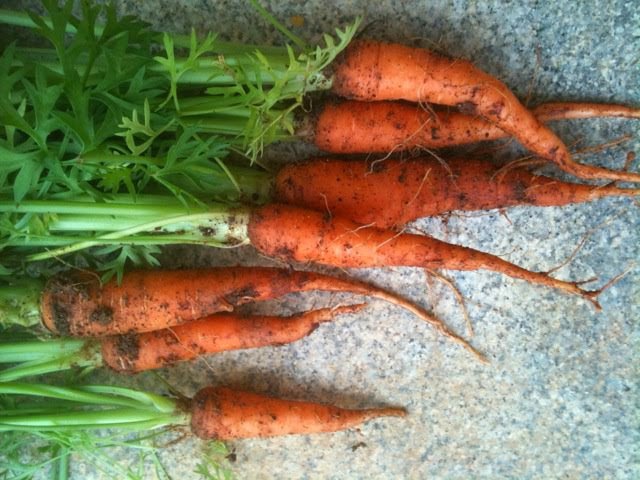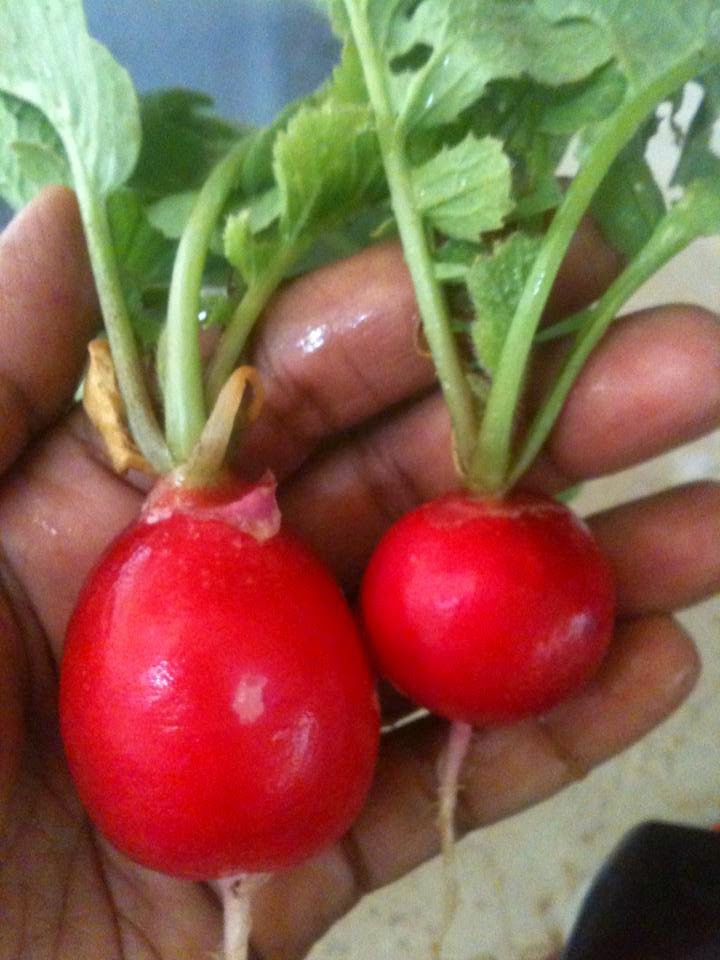So you want to have a little kitchen garden? Don’t let the word ‘garden’ discourage you. A few pots on a sunny window sill, a foot wide soil around your compound, or even a bunch of pots on the waterproofed terrace can all turn into a productive little ‘garden’. The most important thing is to start small, with easy to grow plants
A few thumb rules apply for kitchen gardening. Soil used to grow any vegetable should be well aerated, neither too loose nor too compact. The depth of the soil needs to be more than one foot. The soil should retain moisture, for example, a mix of red soil clay, small pebbles, vermicompost and once the seed has germinated, cover the top layer with dried leaves. It is worthwhile to do a germination test before sowing. Soak seeds in water for 4 hours, discard floating seeds (these wont germinate) and sow the others. The best time to sow is when there will be three hours of sunlight post sowing, so around 9-10 am in most places would be a good time
You can start with either seed or sapling. For newbie gardeners, saplings cut down on the waiting time and also the chances of the seed not germinating or getting affected by pests in the early stages and leading to disappointment
—
Lavender
HERBS
I personally started my kitchen garden experiments with a few herbs in my tiny Bombay apartment balcony. The joy in garnishing a dish of pasta with a freshly plucked leaf of Italian basil was unparalleled. That’s the magic of herbs. A little goes a long way, and they are most flavourful when they go straight from pot to plate. Be it basil, rosemary, thyme or mint. Also, unless you are making a pesto (in which case you need lots of basil) you need just a few leaves, for which you don’t need to buy a big expensive bunch from the supermarket
Don’t ignore the Indian favourite, Tulsi or holy basil. It is excellent in teas to prevent or soothe a bad throat. A sprig of tulsi in a jug of water imparts a delicate flavour and subtle health benefits. Mint easily grows from sprigs that you have bought from the market. It covers ground very quickly, so it is best grown in pots. Curry leaves, a South Indian favourite, grow best in the soil as the roots go quite deep. Curry leaf sapling is available in most big nurseries
When you buy lemongrass from a supermarket, choose one with the root end intact. After you use up the leaves, keep the root immersed in a jar of water for one week. Once new rootlets develop, this can be sown in soil and soon you’ll have lemongrass leaves sprouting out. These can be used in Thai curries and also to flavour masala chai

—
My mum plucking chillies
CHILLIES
Amazon.in Widgets While there are different varieties of chillies, kandhari is one that grows well in winters. We got nearly 3-4 kilos of this one from one plant in season. Obviously since they can’t all be used at once, we allowed them to ripen, dried them out in sun and now use it in daily cooking. These can be grown in pots, but the yield will not be as much as when grown directly in soil. You can use the seeds from any dried red chillies at home, to grow that particular variety

—
Lettuce patch
OTHER GREENS
Sow garlic cloves in soil and in a few days you’ll find green garlic shoots, which can be snipped and used in chutneys, curries etc. Salad greens like lettuce, rocket etc also grow well in shallow trays. Seeds are available in most online gardening stores. Celery is also easy to grow, both leaves and stems can be used in stocks, soups and salads

—
Just harvested carrots
ROOTS
Red radish is a delight to grow as it is ready to harvest in 30 days. Don’t sow too many at a time, as you can eat all of them together. Also, don’t sow the seed deeper than 1-2 cm
To grow turmeric and ginger, bury a piece in the compost pot, sprinkle water every day and after few days bury it in soil along with some of the compost. This has better success rate. Turmeric leaves lend a delicate aroma to foods steamed by wrapping in them. Of course, it is used to tie around the pongal pot so it is the perfect time to put one in soil before the onset of winter

—
Red radish <3 td="">
For inspiration, join relevant Facebook groups such as Grow Your Own Veggies, Organic Terrace Gardening which have many enthusiastic kitchen gardeners, ready with advice, suggestions and support
Attend local farmers markets, events like Oota from your Thota in Bangalore, or attend seed and sapling sharing events where you can buy seeds, saplings and get inspiration from the rest of the kitchen gardening community
Start small and bask in the joy of cooking with home grown herbs and vegetables. [With expert inputs from Alladi Mahadevan, organic farmer – theorganicfarm.in
Originally published in Hindu Business Line
[Disclaimer: Amazon affiliate links are provided for ease of browsing through relevant seeds available online. Purchasing through the links will support the saffrontrail blog. Thank you
(c) Nandita Iyer 2006-2015




Awsomness. Ive grown Chives, keffir lime, lemons, spring onions or asian chives and also basil. Never tried my hands on Rosemary or Thyme. I’m going to do it this time…and oh! Lavender…what are the conditions for lavender? Think it’ll grow in my bombay balcony?
Choosinga right kind of food is very difficult for me. I am searching for the foodwhich is clean eating and I found that in yours blog.
This information is very useful to us by the way nice post and thanks for share any way . I want you to visit the link below to get some useful info like Customer Care Number
Very nice information that you are sharing about events and thanks for sharing theinformation with us DryFruits supplier Vidyaranyapura
Quite interesting and useful article. Thanks for sharing.http://www.aparyoga.org